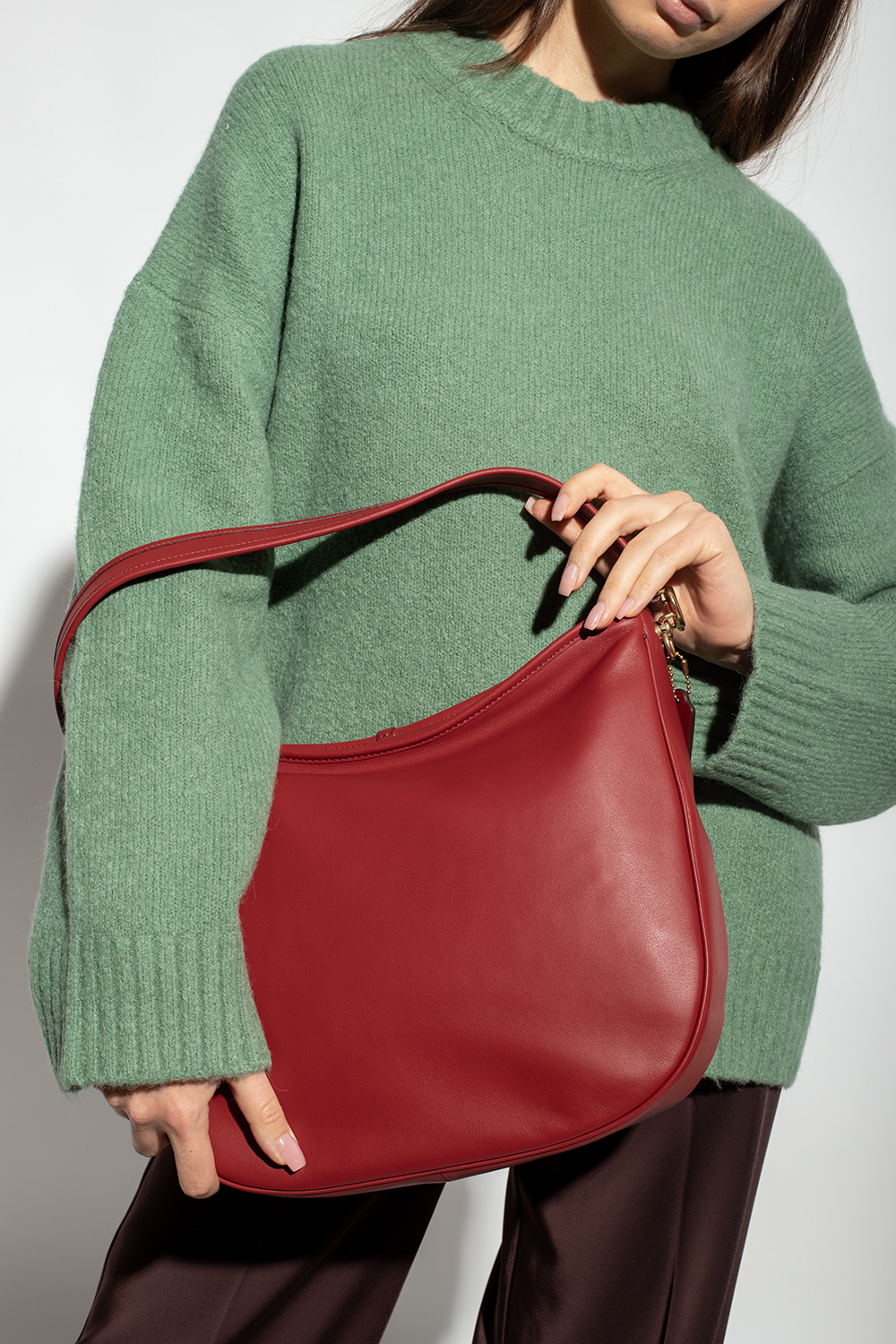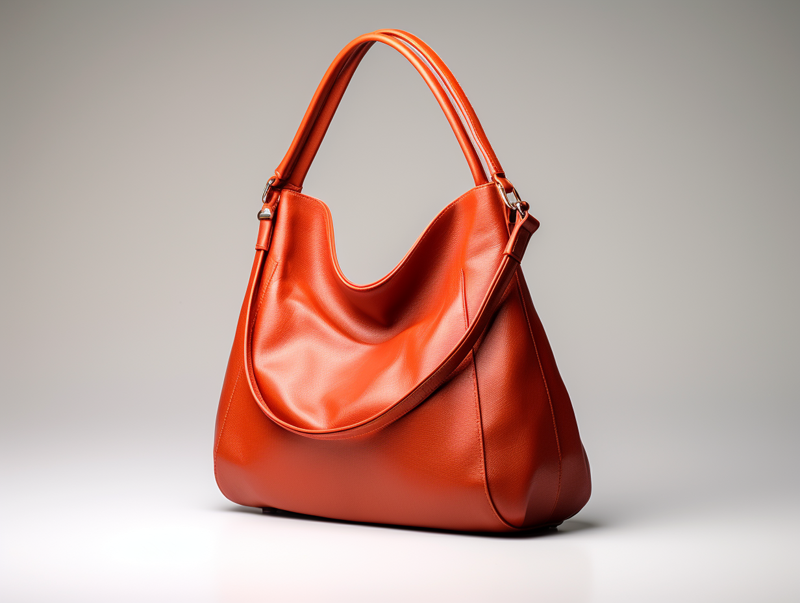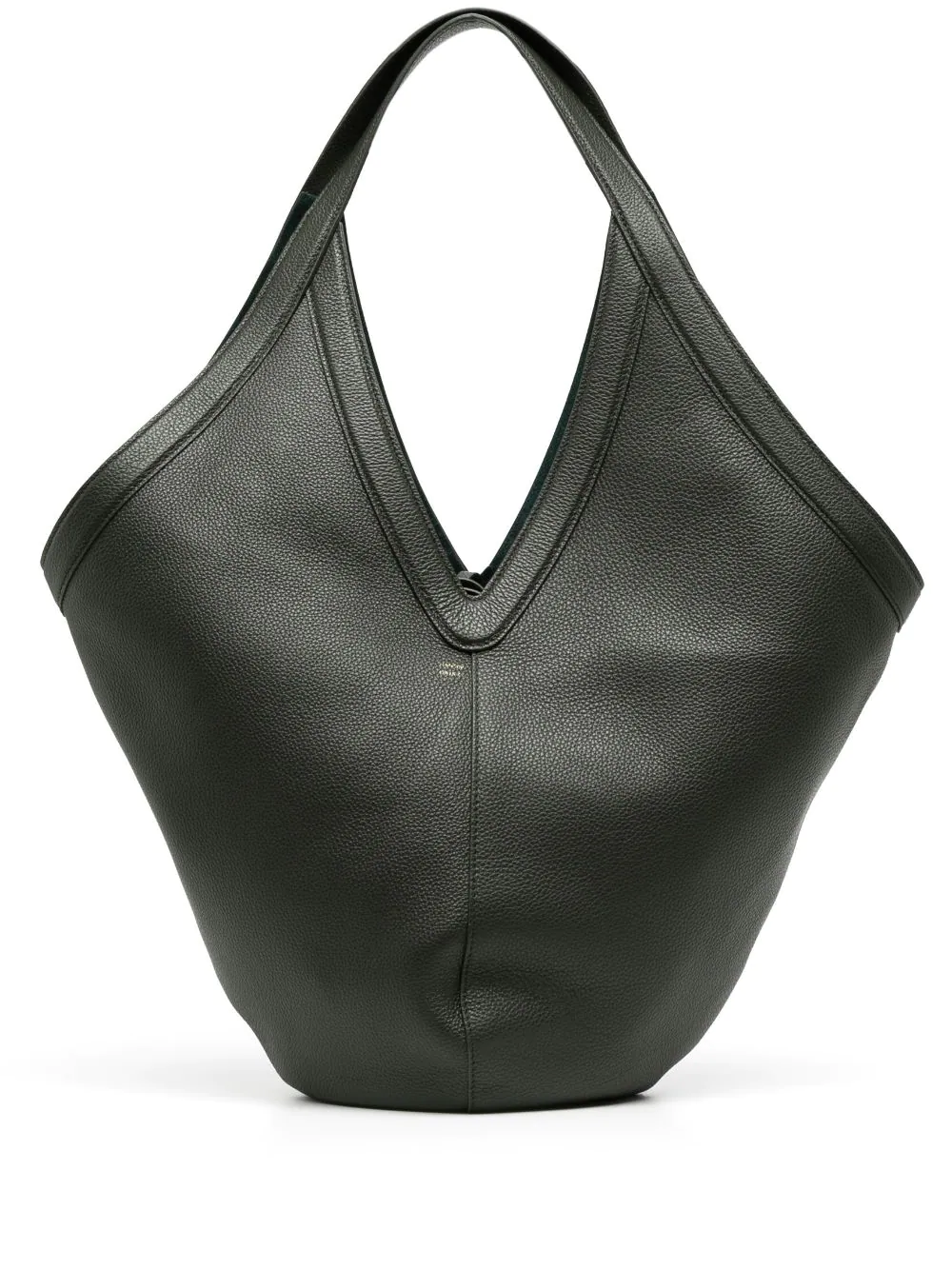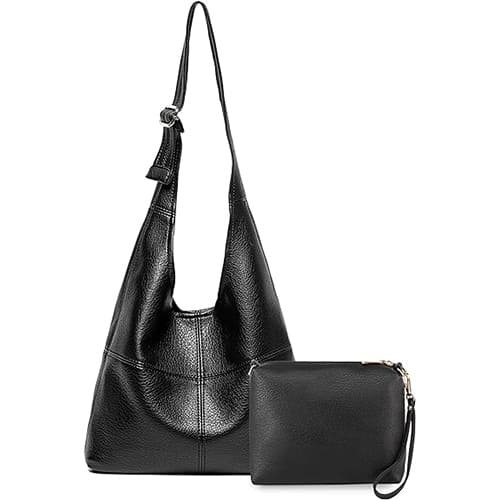A hobo bag is a slouchy, crescent-shaped shoulder bag with a long strap. Its relaxed silhouette and soft structure make it a versatile and timeless fashion accessory.

Table of Contents
- The Defining Characteristics of a Hobo Bag
- A Brief History: From Practical Bindles to Fashion Runways
- Why the Hobo Bag Remains a Wardrobe Essential
- A Strategic Approach for Brands: Tapping Into the Hobo Bag’s Appeal
- Styling the Modern Hobo Bag: Tips and Inspiration

The hobo bag has cemented its place in fashion history as a symbol of effortless style. Its unique blend of practicality and bohemian chic has allowed it to transcend fleeting trends, appearing on the arms of style icons and in the collections of premier designers decade after decade. What gives this particular handbag such enduring appeal, and how can accessory brands successfully incorporate this classic into their own offerings? Understanding its core attributes, rich history, and inherent versatility is key to appreciating and capitalizing on its status as a true fashion staple.

The Defining Characteristics of a Hobo Bag
While modern interpretations vary, the classic hobo bag is identified by a few key features that work in harmony to create its signature look and feel. These elements distinguish it from other shoulder bags, such as totes or satchels, and are fundamental to its identity.
The most recognizable feature is its crescent shape. When resting or held, the bag dips in the middle, creating a gentle, moon-like curve. This shape is a direct result of its slouchy, unstructured silhouette. Unlike rigid bags that hold their form, a hobo bag is crafted from soft, pliable materials that allow it to drape and mold comfortably against the body. This flexibility is central to its relaxed and informal charm.
A hobo bag is almost always defined by its single shoulder strap. This strap is often integrated seamlessly into the body of the bag, creating a continuous, fluid line. The length is typically designed for it to be worn comfortably over the shoulder, sitting snugly under the arm. Finally, the choice of material is crucial. Traditionally, hobo bags are made from supple materials like suede, canvas, or soft leathers that enhance their signature slouch. Modern versions might use nylon or vegan alternatives, but the emphasis remains on flexibility.
This table illustrates the key differences between a hobo bag and other popular handbag styles:
| Feature | Hobo Bag | Tote Bag | Satchel |
|---|---|---|---|
| Shape | Crescent / Curved | Rectangular / Square | Structured Rectangle |
| Structure | Slouchy / Soft | Often Unstructured | Rigid / Firm |
| Strap(s) | Single Shoulder Strap | Two Parallel Handles | Top Handle & Crossbody |
| Vibe | Relaxed / Bohemian | Utilitarian / Casual | Professional / Classic |
A Brief History: From Practical Bindles to Fashion Runways
The hobo bag’s journey from a utilitarian object to a high-fashion accessory is a fascinating story of cultural evolution. Its name and shape have roots in a history far removed from the glamour of the runway, which adds to its unique character.
The Humble Origins
The term “hobo” originated in the late 19th century to describe itinerant workers in the United States who would travel in search of employment. These individuals often carried their belongings in a “bindle,” a piece of cloth tied into a bundle at the end of a stick. This slouchy, crescent-shaped bundle, carried over the shoulder, is widely considered the visual predecessor of the modern hobo bag. The name itself was adopted to describe a bag that mirrored this distinctive, unstructured shape.
The Rise in Popular Culture
The hobo bag transitioned from a symbol of necessity to a fashion statement in the 1960s and 1970s. During the height of the hippie and bohemian movements, its relaxed and non-conformist silhouette resonated with the era’s free-spirited ethos. It became the accessory of choice for those who favored a more natural, less structured approach to fashion. The bag’s practicality and unassuming style made it a perfect fit for a generation that valued freedom and individuality over rigid formality.
The 21st-Century Revival
After its initial peak, the hobo bag experienced a major resurgence in the early 2000s with the rise of “boho-chic” style, championed by celebrities and fashion influencers. Since then, it has become a permanent fixture in the accessory world. Luxury houses and contemporary brands alike continuously reinterpret the hobo, experimenting with new materials, hardware, and proportions. Today, it stands as a sophisticated classic, appreciated for both its historical roots and its modern adaptability.
Why the Hobo Bag Remains a Wardrobe Essential
The hobo bag’s lasting popularity is not accidental. It is rooted in a powerful combination of aesthetics and functionality that meets the needs of a modern lifestyle while offering timeless style.
Its unmatched versatility is a primary reason for its success. A well-designed hobo can seamlessly transition from a casual weekend outing with jeans and a sweater to a relaxed business-casual setting with trousers and a blazer. Its ability to complement a wide range of outfits makes it a reliable go-to accessory.
Beyond style, the bag is celebrated for its ergonomic comfort. The soft construction and single strap allow it to rest comfortably on the shoulder and conform to the wearer’s body. Unlike heavy, structured bags that can feel cumbersome, the hobo moves with you, making it an ideal choice for all-day wear. It is also remarkably spacious and practical. The unstructured design often conceals a roomy interior capable of holding everything from a wallet and phone to a tablet and a water bottle, all without appearing overly bulky.
Ultimately, the hobo bag projects an air of effortless sophistication. It communicates a sense of relaxed confidence and style that isn’t forced. It’s the kind of accessory that completes a look without dominating it, embodying an understated yet undeniably chic aesthetic.
A Strategic Approach for Brands: Tapping Into the Hobo Bag’s Appeal
For handbag and accessory brands, the hobo bag represents a significant commercial opportunity. Its status as a timeless staple means it is not subject to the whims of fast-fashion cycles. However, successfully marketing this classic requires a thoughtful and strategic approach.
Focus on Premium Materials and Craftsmanship
Because of its simple silhouette, the quality of a hobo bag is immediately apparent in its materials. The unstructured design puts the texture, drape, and durability of the chosen material on full display. This is where brands can truly differentiate themselves. Using high-quality materials like full-grain leather, buttery suede, or durable, high-end canvas elevates the bag from a simple accessory to a luxury investment piece. Brands that, like Beldtura Leather, build their identity around superior craftsmanship and premium, long-lasting materials are perfectly positioned to excel. When a hobo bag is made from full-grain leather, it not only looks and feels exceptional but also develops a beautiful patina over time, turning it into a unique, personal heirloom for the customer.
Innovate on the Classic Silhouette
While the traditional hobo shape is timeless, brands can capture new market segments by innovating on the classic design. This can be achieved in several ways. Playing with size is an effective strategy; offering mini hobo bags caters to the demand for smaller evening or event bags, while oversized versions make a bold fashion statement. Introducing more structure creates a hybrid design that appeals to customers who love the crescent shape but prefer a more formal bag. Finally, incorporating unique hardware—such as custom-designed buckles, elegant zipper pulls, or distinctive strap attachments—can serve as a powerful brand signifier and add a touch of modern refinement.
Craft a Compelling Marketing Narrative
The story behind the hobo bag is one of its greatest assets. Brands should leverage this rich history and inherent character in their marketing. Positioning the hobo as the embodiment of “effortless style” appeals to the busy, modern consumer who values both function and fashion. For higher-end versions, framing it as a “timeless investment” shifts the focus from a seasonal purchase to a long-term wardrobe staple. This narrative is particularly effective for bags made from durable, high-quality leather. Showcasing the bag’s versatility through lifestyle-focused content—such as lookbooks, social media imagery, and blog posts—can inspire customers by demonstrating how a single bag can be styled for work, weekends, and travel.
Styling the Modern Hobo Bag: Tips and Inspiration
The beauty of the hobo bag lies in its adaptability. It can anchor a wide variety of looks, from the very casual to the tastefully professional. How it is styled can transform its entire vibe.
The Casual Weekend Look
For an easy, polished weekend outfit, the hobo bag is a perfect choice. Pair a classic leather or suede hobo with well-fitting jeans, a simple white t-shirt or a cozy knit sweater, and a pair of stylish sneakers or flat loafers. The bag adds a touch of laid-back luxury to an otherwise simple ensemble, making you look put-together without appearing to have tried too hard. A hobo in a rich tan, cognac, or black leather is especially versatile for these kinds of looks.
The Modern Bohemian Vibe
To channel the bag’s free-spirited roots, style it with bohemian-inspired pieces. A flowing maxi dress, a pair of suede ankle boots, and delicate, layered jewelry create a look that is both romantic and contemporary. In this context, a hobo bag in a soft suede, a woven fabric, or a leather with fringe or tassel details works exceptionally well. It ties the entire outfit together, paying homage to the bag’s iconic 1970s aesthetic.
The Relaxed Business Casual
The hobo bag can also find a place in a modern, relaxed work wardrobe. To make it office-appropriate, opt for a more structured hobo in a high-quality, smooth leather and a neutral color like black, navy, or deep brown. Pair it with tailored trousers, a silk blouse, and a chic blazer. The bag’s soft curves provide a beautiful contrast to the sharp lines of the tailoring, creating a look that is professional yet approachable and stylish.



